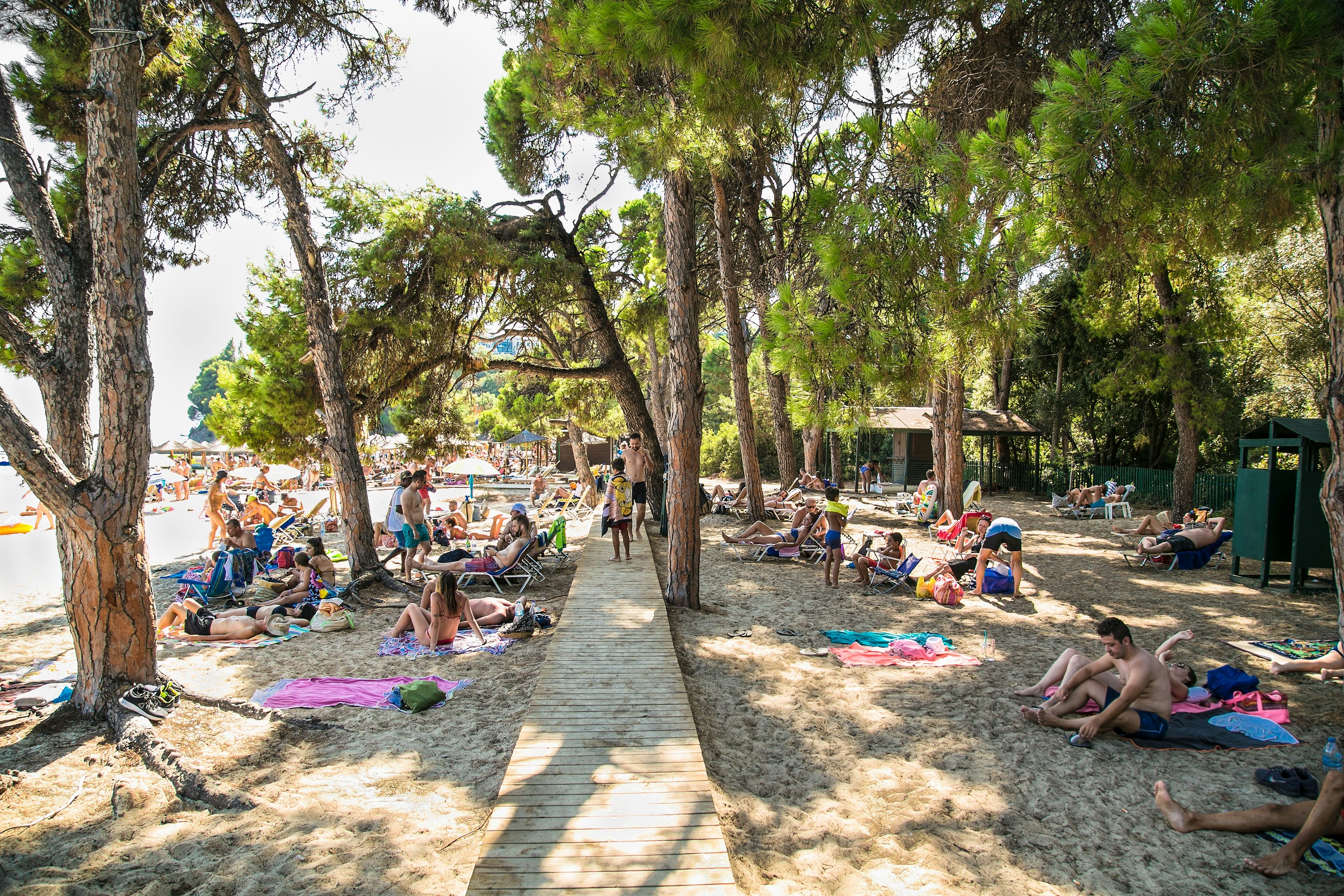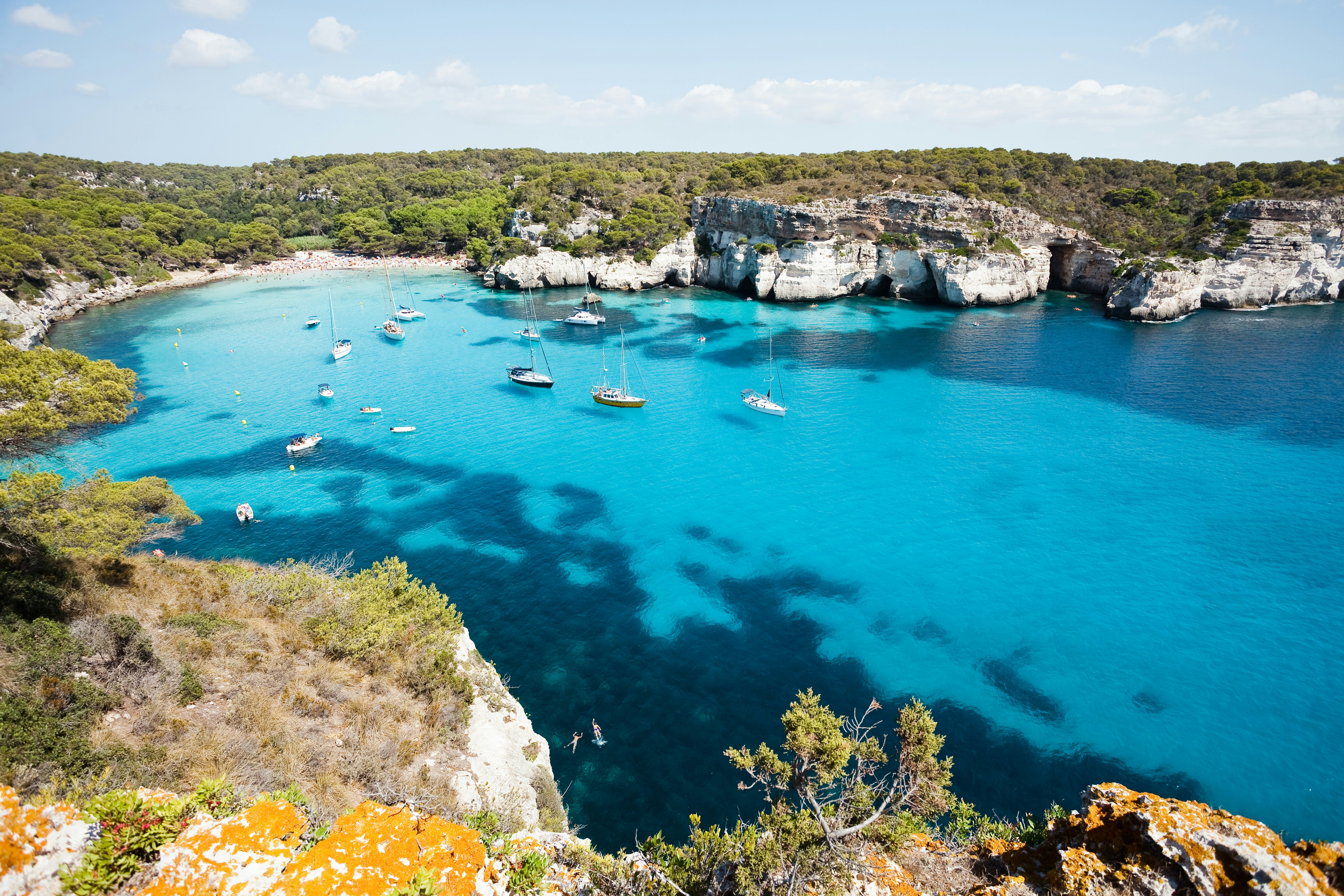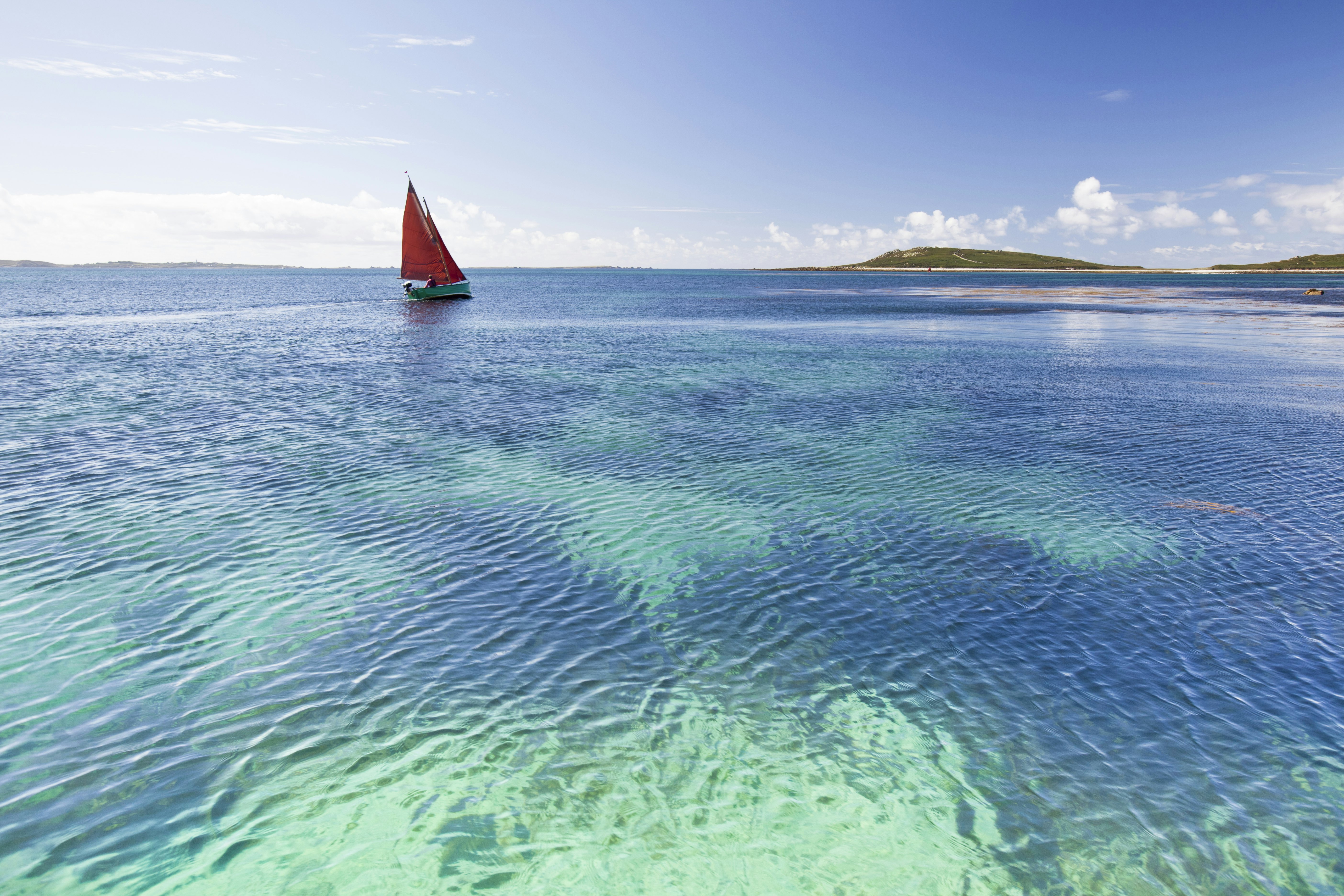

Korčula Town is awash with historic architecture © xbrchx / Shutterstock
One of Europe’s best features is the stunning diversity of its landscapes — and that extends to its magnificent islands.
Whether you want to take in whitewashed buildings that cling to rocky cliffs or see the northern lights brighten the sky from a snowy isle, Europe has the perfect spot. We’ve rounded up some unique and beautiful islands across the continent from Lonely Planet's The Islands Book. Here are 12 of the best.
1. Korčula, Croatia
A tapestry of vineyards, olive groves and dense forests blankets Korčula, the greenest of the Dalmatian islands. It lies just 3km (1.8 miles) from the mainland and is understandably busy in summer, but outside the peak season, it’s a serenely beautiful place to visit. The island’s well-preserved medieval towns and villages are awash with historic architecture, from the Gothic, Renaissance and Baroque palaces of Korčula Town to the simple stone cottages and farmhouses of the interior. It’s a place to hike or bike to small-scale wineries and olive mills; see traditional folk dances, religious processions and musical performances; or better still, laze on a sandy beach, an attraction almost unheard of in Croatia.

2. Skiathos, Greece
Eyes closed, picture the Greek beach of your dreams. A glinting pebble-studded cove? A luscious stretch of powdery white sand? A rocky sea-hugging outcrop at sunset? Skiathos is all this, and much more. Birthplace of the great 19th-century Greek writer Alexandros Papadiamantis and a key location during the Greek War of Independence, this history-rich pine-scented island sits just off mainland Greece, halfway between Athens and Thessaloniki, in the glittering Sporades. The small and relaxed capital, Skiathos Town, reveals a jumble of white-walled streets and traditional island architecture, while ancient monasteries lie tucked away in the hushed mountains and the unbelievably beautiful coastline unfolds in a series of blissful strands backed by rolling olive groves. Escape to the cliff-edged northern coast, whose craggy hills sweep down to secluded silver-pebble coves where family-owned tavernas have been serving up feta-loaded salads, crisp golden chips and platters of super-fresh seafood for years.
How many Greek islands can I see in a week?

3. Sardinia, Italy
The largest island in the Mediterranean after Sicily, Sardinia is the feisty, brilliantly moody and charismatic offspring of conquest and occupation. Power-hungry masters were numerous prior to the island becoming part of unified Italy in 1861, yet the Sards never let time or the elements erase their brilliant story. The fierce passion and pride in Sardinian culture and heritage, the stubborn fraternity, the infectious zeal for la festa (party) and the slow food ethic that every islander shares is compelling. Think beyond flopping on the dreamiest white beaches on European shores. Exploring this natural habitat is a wild adventure, with vertiginous coastal paths and spectacular cliff-cradled bays, rugged mountains and sheep-specked hinterland, remote hilltop villages, Neolithic tombs and medieval cities riddled in mystery.
8 things to know before traveling to Sardinia, Italy

4. Corsica, France
It has been part of France for more than 200 years, but wild and fiercely proud Corsica (Corse or L’Île de Beauté, meaning the "Island of Beauty") is dramatically different from the mainland. Be it customs, culture, cuisine or language, a unique Corsican identity oozes out of every last pretty hilltop village, harmonious polyphonic song and haunting lamentu (lament) listened to over a glass of blood-red Cap Corse Mattei. Corsica’s natural landscape is kaleidoscopic. Its sandy beaches and gold-crescent coves, thick forests and verdant valleys, sawtooth mountain ridges and rocky promontories are heaven for outdoor explorers. Immense geographical diversity is also the backbone of the island’s compelling multifaceted history. Begin at ground zero with the enigmatic "Sea People."

5. Menorca, Spain
Welcome to the easternmost tip of Spain – a soulful, sun-soaked, beach-wrapped jewel of an island washed by the sparkling Balearic Sea, where sustainability was the cornerstone of local tourism long before it became a buzzword. Declared a UNESCO Biosphere Reserve back in 1993, beautiful Menorca unveils inspiringly designed agroturismes (rural hotels), mystifying Bronze Age ruins, rippling wetlands, pine-scented coastal trails and a string of the country’s most exquisite beaches. Its two elegant cities tell stories of its embattled past: harborside capital Maó (Mahón) bursts with British-influenced architecture, while colorful Ciutadella brings a more Spanish feel. From its blissful protected beaches to its strong gastronomic heritage, this go-slow island is making waves as a responsible-travel destination.

6. Saaremaa, Estonia
If you’re looking for the soul of Estonia, skip the medieval turrets of Tallinn and the university fervor of Tartu and head instead to the vast open spaces of Saaremaa. The largest island in the country is home to oak and juniper forests, craggy sea cliffs and small villages that still follow the ancient rhythms of rural life. For Estonians, there’s an ineffable magic to Saaremaa’s old windmills, flower-strewn meadows and folkloric history that dates back many centuries. One of the country’s most impressive castles rises above the picturesque town of Kuressaare – the island’s biggest settlement – and the mazelike corridors within are packed with Estonian treasures. Saaremaa is also known for its earthy cuisine, from rye bread made from old family recipes to smoked fish sold from tiny markets, alongside some of the best farmhouse beer brewed in the Baltics.

7. Lofoten Islands, Norway
The fabled maelstrom and fire-engine-red fishing huts on stilts in Lofoten that French novelist Jules Verne evoked in his classic sci-fi adventure novel, Twenty Thousand Leagues Under the Sea, were no flights of fancy. This end-of-the-Earth archipelago, linked by ferry or a series of road tunnels and bridges to mainland Norway, is straight off a cinema screen. The raw natural beauty – not to mention the celestial Arctic light – is simply staggering. Fishing, farming and tourism chart out the seasons on this rugged string of islands where the flow of the Gulf Stream ensures a soft warmth unmatched elsewhere in the Arctic Circle. On white summer nights, the midnight sun bathes the islands’ shark-fin chiseled mountains in gold and turns the Norwegian Sea a pale violet no painter can truly capture. The coveted winter chase – in a kayak or husky sled, on snowshoes or horseback – to watch the northern lights tango purple and emerald-green across the dark sky is majestic, unmatched and utterly unforgettable.

8. Gotland, Sweden
Known as the "Queen of the Baltic," Gotland is a magical island where medieval towns and churches butt up to sandy beaches and dunes, sculptural sea stacks, lush meadows and sleepy villages. It is Sweden’s largest island and sits in the Baltic Sea roughly halfway between mainland Sweden and Estonia – a strategically important location that has seen it inhabited for some 8000 years. Gotland is home to the narrow, cobbled lanes and quaint cottages of Visby, its UNESCO World Heritage-listed capital, with wonderful early Gothic architecture and the most alluring of long summer evenings. Outside the capital and away from peak season, it’s a serenely tranquil spot, sparsely populated and best explored by bike. Come for the medieval week in August to see jousters and jesters; the truffle festival in November; or just to wander from flea market to beach to remote hamlet, soaking up the views as you go.

9. Texel, the Netherlands
Sweeping white-sand beaches, wildlife-rich nature reserves, sun-dappled forests and quaint villages are just some of the highlights of Texel (pronounced "tes-sel"), the largest and most-visited of the Wadden Islands, which stretch along Holland’s northeast coast. Once a main stop for ships en route to Asia, Africa and North America (the first trade mission to the East Indies began and ended here), Texel’s typically flat Dutch landscape makes it ideal for cycling, and sheep are everywhere: the local wool is highly prized and lamb is always on the menu. During lambing season around Easter, you’ll see bouncy lambs aplenty; join the locals in taking a Lammetjes Wandeltrocht (a "walk to look at the lambs"). With enough diversions to keep you entertained for days on end, Texel is popular with Dutch and German visitors but is otherwise little-known, making it feel like a real find.

10. Isles of Scilly, England
Given England’s unexotic and often bleak weather, it is all the more extraordinary to think that the country squirrels away an ecological Eden where subtropical succulents, desert cacti and Seychelles-esque palm trees grow like weeds near beautiful beaches. But then again, the Isles of Scilly, 45km (28 miles) off Cornwall’s southwest shore in the Atlantic Ocean, have always been cut off from mainland Britain, ensuring a unique ecosystem blissfully undisrupted by invasive plant or animal species. This paradisal string of 200-odd islands – five are inhabited – belongs to the Duchy of Cornwall, an ancient royal fiefdom where every local is a tenant of the Prince of Wales. This Scillonian anomaly aside, British tradition is tantalizingly alive and well, from crab sandwiches or fish and chips to creamy ice cream whipped up from island milk and flowers, or farmhouse fudge cooked on an Aga in the farm kitchen.

11. Isle of Skye, Scotland
The second-largest of Scotland’s islands, in the Inner Hebrides, is its most spectacular, with a landscape that lurches from quiet coves and inky lochs to jagged pinnacles, tumbling waterfalls and pleated cliffs. Skye’s dramatic mountains and undulating moors are easily reached by a bridge from the mainland, but to access the remotest corners and most impressive views you’ll need to take to the high moorland on foot, cycle precipitous mountain roads, or kayak along the puckered and indented coast. Temper it all with a visit to fairy-tale castles, colorful fishing villages and a host of museums, galleries and craft shops in the island’s lively towns. Bring a raincoat, though: the name Skye comes from the old Norse sky-a, meaning "cloud island." The weather here is unpredictable at best, but the scudding clouds and brooding skies only heighten the drama.

12. Inis Mór, Ireland
The largest of the three Aran Islands in Galway Bay, Inis Mór (Big Island) is a thriving community where Irish is the spoken language and traditional music, culture and heritage go hand in hand with a lively calendar of festivals and events. A vast network of hand-built stone walls crisscross the fissured limestone landscape, with the island’s one road joined by countless lanes and pathways leading to ancient monuments, medieval churches, high crosses, holy wells and stalwart lighthouses. Come to walk, ride or cycle along the edge of Europe, to join a yoga retreat or learn to weave a traditional basket, play a bodhrán (goat-skin drum) or sing in the traditional sean-nós style. Or you could feast on fresh lobster, celebrate the summer solstice or just marvel at the unique light and culture here that have attracted artists and writers for centuries.














